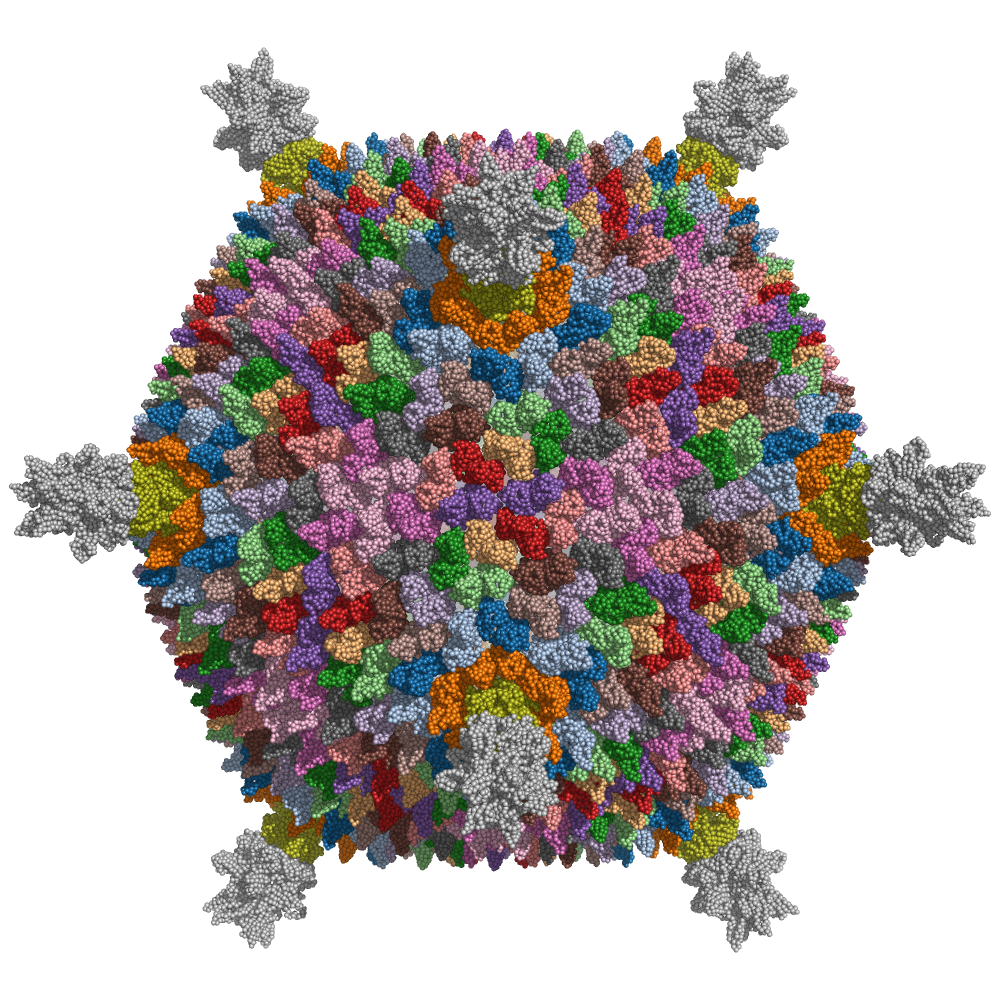Note
Go to the end to download the full example code
Biological assembly of a structure¶
Often the biological assembly (or biological unit) reveals the complete picture of a protein function, may it be a viral capsid or a microfilament. However, the usual atom records in an PDB or PDBx file usually describe only the asymmetric unit. For large complexes the asymmetric unit may only display one monomer or one small subcomplex. Multiple copies of the asymmetric unit must be geometrically arranged to build the assembly.
In order to get the entire assembly, the PDBx files provided by the RCSB PDB (either in CIF or BinaryCIF format) contain the following fields:
pdbx_struct_assembly- General information about the assemblies
pdbx_struct_assembly_prop- More specific properties
pdbx_struct_oper_list- A list of tranformation operations
pdbx_struct_assembly_gen- Which tranformation operations frompdbx_struct_oper_listneed to be applied for the assemblies
More information about biological assemblies is provided by the RCSB PDB on this page.
In this example, we will create the complete biological assembly of the capsid from the Sulfolobus turreted icosahedral virus - a hetero 1080-mer!
At first we will check, which assemblies are available to us.
# Code source: Patrick Kunzmann
# License: BSD 3 clause
from tempfile import NamedTemporaryFile
import biotite.structure as struc
import biotite.structure.io.pdbx as pdbx
import biotite.structure.io as strucio
import biotite.database.rcsb as rcsb
pdbx_file = pdbx.BinaryCIFFile.read(rcsb.fetch("3J31", "bcif"))
assemblies = pdbx.list_assemblies(pdbx_file)
print("ID name")
print()
for assembly_id, name in assemblies.items():
print(f"{assembly_id:2} {name}")
ID name
1 complete icosahedral assembly
2 icosahedral asymmetric unit
3 icosahedral pentamer
4 icosahedral 23 hexamer
5 icosahedral asymmetric unit, std point frame
'complete icosahedral assembly' sounds good.
In fact, often the first assembly is the complete one.
Hence, the get_assembly() function builds the first assembly
by default.
Since we know the ID we want ('1'), we will provide it to this
function anyway.
It returns the chosen assembly as AtomArray.
Note that the assembly ID is a string, not an integer.
biological_unit = pdbx.get_assembly(pdbx_file, assembly_id="1", model=1)
print("Number of protein chains:", struc.get_chain_count(biological_unit))
Number of protein chains: 1080
Now we could do some analysis on the biological unit. But for this example we will simply save the entire assembly as PDB file for later visualization.
# For brevity, save only CA atoms to file for visualization
biological_unit = biological_unit[biological_unit.atom_name == "CA"]
temp = NamedTemporaryFile(suffix=".cif")
strucio.save_structure(temp.name, biological_unit)
# Visualization with PyMOL...
temp.close()


